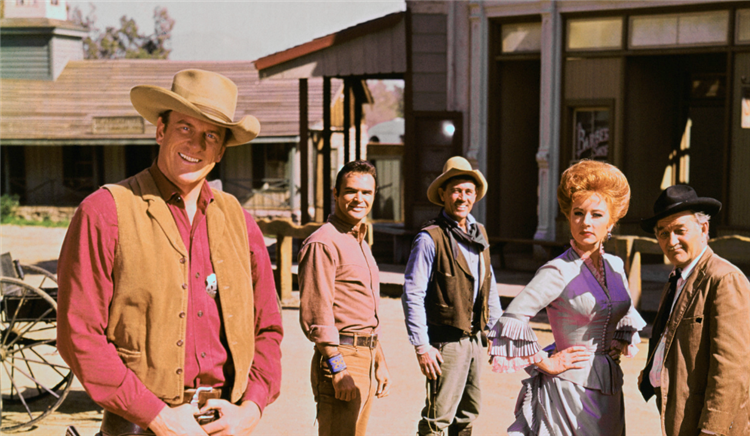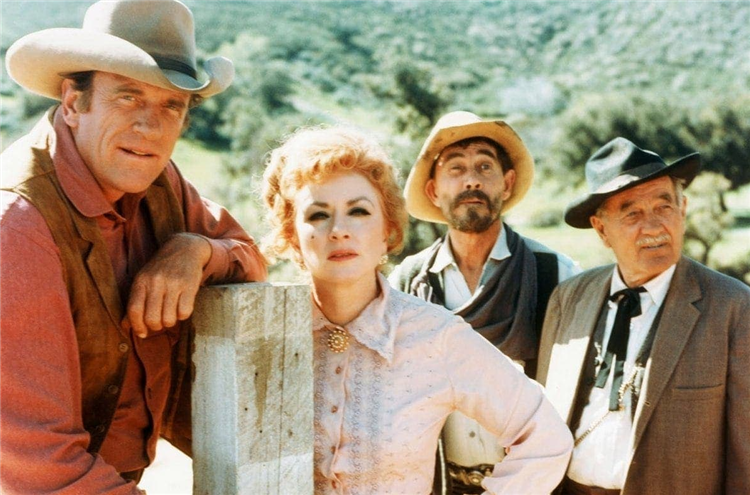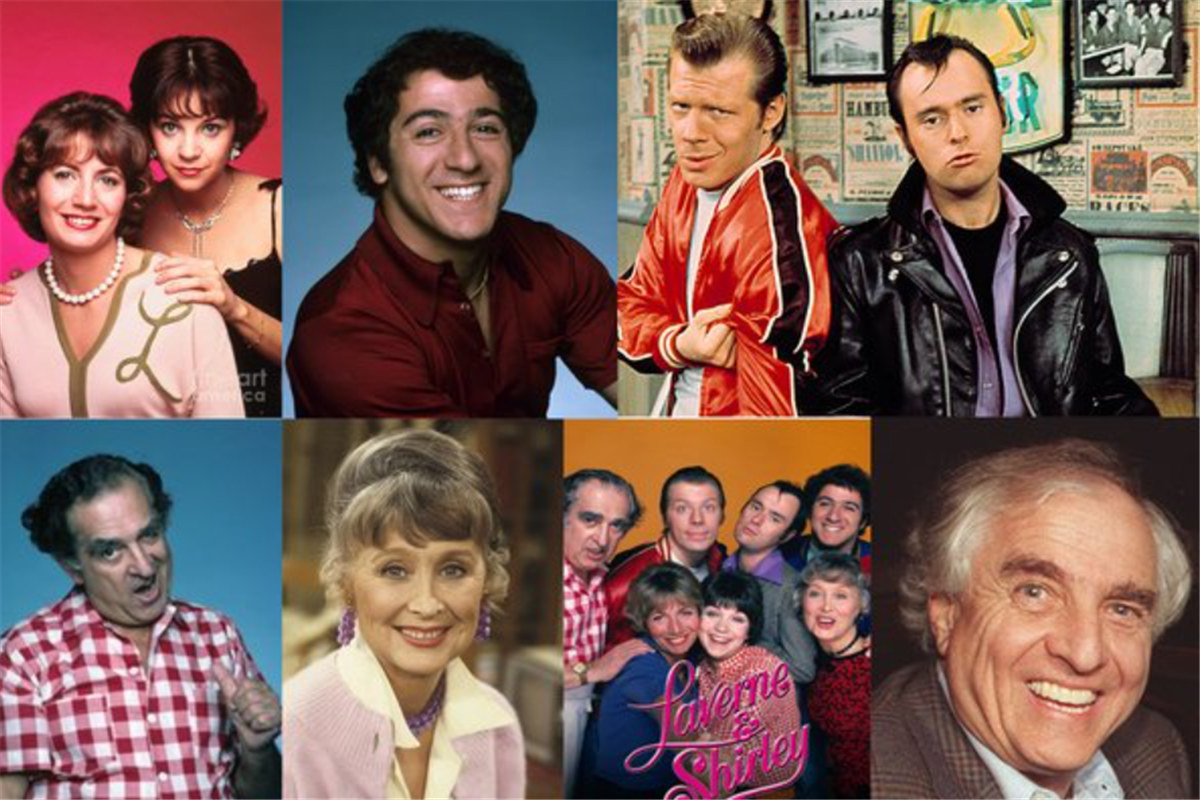“Gunsmoke” ran for a very, very long time. Beginning as a half-hour adaptation of a similarly long-running radio show in 1955, it transitioned to an hour-long show in its 7th season, which gave its stock Western storylines a greater sense of place, and more opportunities for great, up-and-coming actors to star in them. Over the course of 20 seasons, the show told every story under the sun (often multiple times over) about the frontier town of Dodge City, Kansas.
The show’s protagonist was ostensibly Marshal Matt Dillon (James Arness), whose casting has been attributed to no less a Western star than John Wayne. But the world of “Gunsmoke” went far beyond him, especially as the show went on. While Arness appeared in every one of the show’s 635 episodes, he often looked more like a guest star the further along it went, showing up for scenes here and there while the supporting cast or guest stars took the lead role. But Arness’s performance as Dillon was still the selling point of the show, and after the show’s lengthy run he continued to show up for every TV movie reunion, up until 1994’s “One Man’s Justice.” All told, that is nearly 40 years of James Arness as Matt Dillon.
James Arness passed away in 2011. Other longtime leads of the show, such as Amanda Blake and Milburn Stone, passed away decades earlier. Still, a handful of performers who created memorable work for the show are still around. Some of them, like William Shatner and Kim Darby, were best known for their work outside of the show. But others, like Buck Taylor and Roger Ewing, still have a strong association with it.
Roger Ewing (Thad Greenwood)
Just as an example of how long “Gunsmoke” ran: Roger Ewing was a “Gunsmoke” fan in high school, per The Tennessean. Years later, at the age of 22, he got cast on the show first as a guest star, then as a series lead (playing different parts, of course). He would leave the show some two years after that. And it still ran for another eight years.
Ewing’s first role in the show was a fairly small part in season 10’s “Song For Dying,” where he played the son of a man seeking vengeance on a doctor for letting his Indigenous wife die. Ewing’s performance impressed the show’s producers, who brought him on as a lead in the next season.
According to “Television Western Players 1960-75,” they were hoping that if they needed to get rid of James Arness, who was the face of the show, they could have a replacement ready. To their benefit, Roger Ewing’s tenure on the show as Thad Greenwood led to a number of great episodes. If there was tension between him and Arness, as was to be expected given some of the reasons for his hiring, you couldn’t really tell from watching. Ewing made for a solid sidekick and a solid lead when the episode called for it (exceptions like the misguided “Honor Before Justice” notwithstanding).
While other guest stars, such as “The Searchers” actor Ken Curtis, became enmeshed in the cast until the show’s conclusion, the same couldn’t be said for Ewing. After his appearance in the 1972 film “Play It As It Lays,” Ewing largely abandoned the field of acting. As it happened, he was more interested in photography, another field he would abandon later on. Since then, he’s largely lived a private life.
Buck Taylor (Newly O’Brian)

Buck Taylor has not lived as much of a private life as Roger Ewing. In fact, given Taylor’s performance as Emmett Walsh on the modern Western “Yellowstone,” it could be said that he’s embraced the prominence he’s gotten from having been such an integral part of “Gunsmoke” and Western lore in general. Of course, “Yellowstone” ending after five seasons looks like small potatoes next to the immensity of “Gunsmoke.”
With Thad Greenwood leaving the show in 1967, Matt Dillon would need a new deputy, and that’s where Buck Taylor came in. He was Newly O’Brian, a gunsmith who became deputy of Dodge City, and he stayed on as Dillon’s deputy to the very end of its run. There may not have been many great Buck Taylor-centric episodes of “Gunsmoke,” but he made for a great addition to the ensemble.
He would be given the Western Heritage Award from the National Cowboy and Western Heritage Museum in 1981 (in layman’s terms, inducted into the Cowboy Hall of Fame) for his work on the show. If anything, his work on “Gunsmoke” is just one part of his association with Western lore — he is also very well-known for his paintings, typically of frontier landscapes and scenarios. According to the DeSoto Times, his co-star James Arness even used one of his paintings for the cover of his autobiography.
Kim Darby (Angel, Carrie Neely)
Kim Darby is probably best known for her work as Mattie Ross in the 1969 Western film “True Grit,” a role that almost went to Mia Farrow. That movie became significant for star John Wayne, whose performance as Rooster Cogburn netted him the sole Oscar of his career. Which meant it became significant for Kim Darby as well, overshadowing some of the solid work she had put in for other projects.
Some years before “True Grit,” Darby had shown up a couple of times on “Gunsmoke,” playing different characters as was standard. As an actress, her internal strength seemed to clash with her innocent demeanor, a performance dynamic mined in “True Grit” and perfectly visible in her appearances in “Gunsmoke.” In both of her appearances on the show, her sweet-hearted nature came face to face with the extremes of law and order, criminal behavior, and one man’s desire for revenge.
The first of Darby’s appearances was in season 12’s “The Lure,” where she plays Carrie Neely, the daughter of known fugitive Dal Neely (Stephen McNally). There, she was paired with the show’s female lead, saloon operator Kitty (Amanda Blake).
But it was in season 13’s two-parter “Vengeance” that Darby was given a more significant role, playing good-natured Dodge City girl Angel to James Stacy’s vengeance-seeking Bob. Their romantic subplot contrasts intriguingly against the more intense story of Bob finding vengeance for the cattle thieves who attacked his family. Not only is the two-parter a great set of episodes on its own — it’s also a favorite of Quentin Tarantino’s, who wrote about it for his New Beverly cinema.
Kim Darby would keep working on and off for most of the next 50 years, but her output has slowed, especially compared to the regular work she got in the ’70s. But her work from those first two decades still stands tall.
William Shatner (Fred Bateman)

In 1966, William Shatner was given a lead role in the space travel series “Star Trek,” which balanced an optimistic view of humanity’s future and an adventurous spirit directly reminiscent of television Westerns. The respectable but driven Captain James T. Kirk (Shatner) led the crew, putting the actor directly in the spotlight (even if he never quite understood its success), a change of pace for someone who had mostly guested on shows for his 15-year-long acting career.
That same year, Shatner played a villain in an episode of “Gunsmoke” called “Quaker Girl.” As criminal Fred Bateman, he’s hunted by Roger Ewing’s Thad Greenwood, and the two roam the desert until they end up in a Quaker village, where things get a little more complicated.
The fight between Shatner and Ewing in the opening act of “Quaker Girl” is excellent and brutal, and their contentious journey to the Quaker village makes for a great double act. Once they arrive there, each man claims the other is the wanted criminal, which can make for a frustrating dramatic experience, but Shatner does some great work. Removed from the restraint of his most famous role, he gets to be a bit of a wild man, a deranged criminal who’s also not the worst guy in the world.
Given a complex, meaty guest role on “Gunsmoke,” Shatner made the most of it, chewing the scenery as a charismatic bad guy who’s ultimately overshadowed by Western legend Ben Johnson. But still, he’s best known for his heroic work on “Star Trek,” which went far beyond the show’s initial three-season run. Besides Captain Kirk, Shatner led fairly long-lasting television shows like “T.J. Hooker” and “Boston Legal,” which solidified his stature in the American cultural landscape. He’s worked regularly into his 90s, and even left the Earth’s atmosphere with Jeff Bezos.
